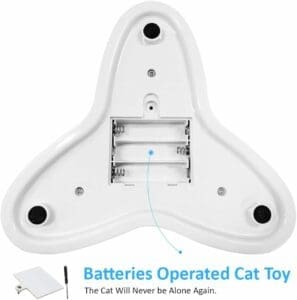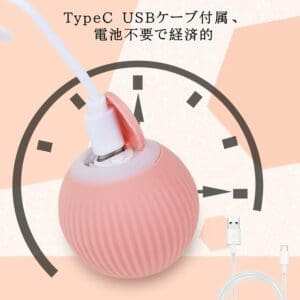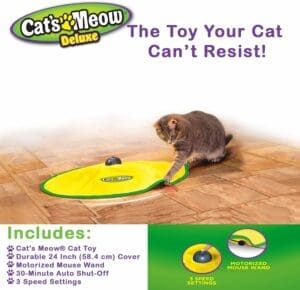Picture this: you’re sitting on the couch, enjoying some quality time with your beloved feline companion. Suddenly, out of nowhere, you hear a loud crash followed by a heart-wrenching yowl. Your cat has injured itself, and you need to act fast. This is where having a cat first aid kit filled with essential supplies for emergencies becomes absolutely crucial. In this article, we will explore the must-have items that should be included in your cat first aid kit, ensuring that you are always prepared to handle any unexpected situation that may arise.
Basic Cat First Aid Supplies
When it comes to taking care of your fur baby, having a well-stocked first aid kit is essential. Here are some basic supplies that should be included in your cat first aid kit:
Gauze pads
Gauze pads are an important addition to your cat first aid kit. They can be used to dress wounds, clean injuries, or apply pressure to stop bleeding. Make sure to choose sterile gauze pads that are suitable for animal use.
Adhesive tape
To secure the gauze pads in place, you’ll need adhesive tape. Look for tape that is safe for use on animals and won’t irritate your cat’s skin.
Antibiotic ointment
Antibiotic ointment can help prevent infection and promote healing in minor wounds. Just make sure to use a cat-friendly antibiotic ointment that is safe for your feline friend.
Scissors
Having a pair of small, blunt-tipped scissors is important in your cat first aid kit. They can be used to cut tape, gauze, or other materials when providing first aid to your cat.
Tweezers
Tweezers are useful for removing small foreign objects or splinters from your cat’s skin. Opt for tweezers with a fine tip to ensure gentle and precise removal.
Wound Care
Accidents happen, and it’s important to be prepared to provide proper wound care for your cat. Here are some supplies that you should have in your cat first aid kit for wound care:
Sterile saline solution
Sterile saline solution is a gentle cleanser that can be used to rinse wounds and flush out debris. It’s important to have this handy to keep wounds clean and prevent infection.
Hydrogen peroxide
Hydrogen peroxide can be used as a disinfectant to clean wounds, but be sure to use it sparingly and under the guidance of your veterinarian. Excessive use of hydrogen peroxide can actually delay wound healing, so it’s best to consult with a professional before using it.
Clean towels
Clean towels are essential for wound care. They can be used to gently dry wounds or apply gentle pressure to stop bleeding. Make sure to have a few clean towels in your cat first aid kit.
Disinfectant solution
It’s important to have a cat-friendly disinfectant solution in your first aid kit to clean any surfaces that may come into contact with your cat’s wounds. Choose a disinfectant that is safe for animals and follow the instructions for proper use.
Medications
In some emergency situations, having the right medications on hand can make a critical difference in your cat’s health. Here are some medications that should be included in your cat first aid kit:
Prescribed medications from your vet
If your cat has any prescribed medications, make sure to include them in your first aid kit. These medications are crucial in ensuring that your cat receives the proper treatment during an emergency.
Antihistamines
Antihistamines can be used to help alleviate allergic reactions or insect bites. However, before administering any antihistamines to your cat, it’s important to consult with your veterinarian to determine the appropriate dosage and type of antihistamine to use.
Feline-friendly pain reliever
Having a feline-friendly pain reliever in your first aid kit can help provide temporary relief for your cat in case of an injury or pain. However, never administer any pain medication without consulting your veterinarian first. They will be able to recommend the appropriate dosage and type of pain reliever for your cat.
Tools and Instruments
Certain tools and instruments can be helpful when assessing your cat’s health or providing first aid. Here are some tools and instruments that should be included in your cat first aid kit:
Digital rectal thermometer
A digital rectal thermometer is essential for monitoring your cat’s temperature. A sudden spike or drop in body temperature can be a sign of an underlying health issue. Make sure to follow the instructions for proper use and consult with your veterinarian if you have any concerns about your cat’s temperature.
Oral syringe
An oral syringe can be useful for administering oral medications or liquids to your cat. This can come in handy during emergencies when you need to quickly administer medication or rehydration solutions.
Stethoscope
Having a stethoscope in your cat first aid kit can help you listen to your cat’s heart and lung sounds. Monitoring these vital signs can provide valuable information about your cat’s overall health.
Nail clippers
Nail clippers are essential for maintaining your cat’s nail health. Trimming your cat’s nails regularly can help prevent them from becoming overgrown and causing discomfort or injury.
Emergency Contact Information
When an emergency occurs, having the right contact information readily available can save valuable time. Here are some essential contacts that should be included in your cat first aid kit:
Veterinarian’s contact details
Make sure to have your veterinarian’s contact details easily accessible in your first aid kit. Having their phone number and address readily available can help you quickly seek professional help in case of an emergency.
24/7 emergency veterinary clinics
In addition to your regular veterinarian, it’s important to have the contact details of 24/7 emergency veterinary clinics. Emergencies can occur at any time, and knowing where to go in critical situations can be lifesaving.
Animal poison control hotline
In case of accidental poisoning, having the contact information for an animal poison control hotline can be invaluable. They can provide immediate guidance and help you take the necessary steps to protect your cat’s health.
Transportation and Containment
During emergencies, it’s crucial to have the means to transport and contain your cat safely. Here are some supplies that should be included in your cat first aid kit for transportation and containment:
Cat carrier or travel crate
A cat carrier or travel crate is essential for safely transporting your cat. Opt for a carrier that is sturdy, well-ventilated, and big enough for your cat to comfortably move around.
Blanket or towel for lining the carrier
Having a soft blanket or towel to line the carrier can help make the journey more comfortable for your cat. It can also provide additional warmth and cushioning.
Temporary confinement options
In some emergency situations, temporary confinement may be necessary to prevent your cat from further injuring themselves or others. Having temporary containment options such as collapsible pet gates or playpens can help keep your cat safe.
Emergency Medical Records
Having your cat’s medical records readily available can greatly assist veterinary professionals in providing the best possible care during emergencies. Here are some medical records that should be included in your cat first aid kit:
Current vaccination records
Ensure that your cat’s vaccination records are up to date and include them in your first aid kit. This information is vital for helping veterinarians assess your cat’s immunization status and make informed decisions regarding treatment.
Medical history
Include a summary of your cat’s medical history in your first aid kit. This should include any pre-existing conditions, previous surgeries or illnesses, and any ongoing medical treatments.
Allergies and sensitivities
Make sure to list any known allergies or sensitivities that your cat may have. This information is critical for avoiding potential allergic reactions when administering medications or treatments during emergencies.
Information Card
Having an information card with important details about your cat can be invaluable during emergencies. Here are some key details to include on the information card:
Cat’s name and description
Include your cat’s name and provide a brief description of their physical appearance. This can help identify your cat quickly if they go missing during an emergency.
Owner’s contact information
Include your contact information, including your name, phone number, and address. This will help emergency responders or veterinary professionals reach you quickly.
Special instructions
If your cat has any special instructions or needs, make sure to include them on the information card. This can include dietary restrictions, medication schedules, or any other important details that caregivers should be aware of during emergencies.
Emergency Care Instructions
Even with the right supplies and tools, knowing how to use them effectively is crucial. Here are some important emergency care instructions to include in your cat first aid kit:
Basic first aid procedures
Having a guide or instructions on basic first aid procedures, such as wound dressing or splinting, can be a lifesaver during emergencies. Familiarize yourself with these procedures and keep the instructions in your first aid kit for quick reference.
CPR for cats
Knowing how to perform CPR on a cat can be life-saving in critical situations. Take the time to learn the proper techniques and include a CPR instruction guide in your cat first aid kit.
Choking rescue techniques
Choking can be a terrifying experience, but knowing how to perform choking rescue techniques can help dislodge the obstruction and save your cat’s life. Make sure to include instructions on how to safely perform these techniques in your first aid kit.
Additional Supplies
While the previously mentioned supplies cover the essentials, it’s always a good idea to be prepared for unexpected situations. Here are some additional supplies that can be helpful in emergencies:
Emergency blanket
An emergency blanket can provide warmth and comfort in case your cat is exposed to cold weather or experiences shock during an emergency. Keep a compact emergency blanket in your first aid kit.
Disposable gloves
Disposable gloves are essential for maintaining hygiene when administering first aid. They protect both you and your cat from potential cross-contamination. Make sure to include a pair of disposable gloves in your first aid kit.
Pet-safe wound spray
Pet-safe wound spray can provide additional antimicrobial protection for your cat’s wounds. Look for a formula that is safe and suitable for cats and follow the instructions for proper use.
Limited food and water supply
In case of extended emergencies or when access to food and water is limited, it’s important to have a small supply of cat food and water in your first aid kit. These supplies can help sustain your cat’s nutrition and hydration until you can secure more provisions.
By having a well-stocked cat first aid kit and being familiar with its contents and usage, you can provide effective care and potentially save your cat’s life during emergencies. Remember, always consult with your veterinarian for guidance and follow their instructions for proper treatment and care.








